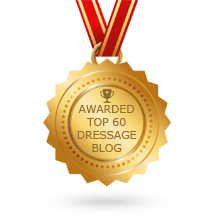|
François de la Guérinière
This exercise [shoulder in] has so many benefits that I regard it as the alpha and omega of all exercises for the horse which are intended to develop complete suppleness and perfect agility in all it’s parts. Nuno Oliveira In the shoulder-in hold your body against your outside elbow. Charles Harris. The most common fault made by riders in doing shoulder-in is to have the horse more bent in front of the wither (or saddle) than behind it. The horse must be the same in front of the withers (or saddle) as he is behind. Nuno Oliveira Correctly done the shoulder-in gives great results as it relaxes and straightens the horse. Alois Podhajsky The most important aid [in half pass] is given by the rider’s inside leg which pushes the horse forward and is responsible for correct bend. Alois Podhajsky The position of the [horse’s] head [in half pass] should be such that the neck is not more bent than the whole body. Nuno Oliveira Don’t exaggerate the bend in the half pass. Otherwise you block the inside shoulder.  As with half pass, travers develops the strength and flexibility of the hind leg as the leg steps under the body mass and carries the weight across. Travers is essentially a half pass ridden down the long side of the school, the main difference being the entry to the movement. In this exercise, the quarters are brought to the inside with the shoulders remaining on the original line of travel. The horse is now bent in the direction of travel with the outside hind leg crossing the inside hind leg. If the horse has been taught a correct shoulder-in this movement is easy to perform. Start with a good circle at the beginning of the long side, ride the corner very correctly with the horse well balanced and round the inside leg. Maintaining an inside flexion, have a moment of straightness as you come out of the corner and then, lightly ask your horse to bring the quarters to the inside with delicate touches from the outside leg behind the girth. Stay balanced and move in the direction of travel. It may help to drop your inside knee down a little so you stay with the movement and don’t tip to the outside. When the horse is confident with travers on the long side, bring him on to a large 20m circle in travers. This further engages the hind quarters and is a developmental exercise for pirouettes. Travers on smaller circles can only be performed in walk and canter due to the mechanics of the paces. © Training Riders, Transforming Horses
|
AuthorDiane Followell Classical Dressage Trainer 
|
Telephone+44 (0)7931551014
|
|
© Diane Followell 2015 -2024.
All Rights Reserved.
All images and content are copyright Diane Followell unless otherwise stated.
All Rights Reserved.
All images and content are copyright Diane Followell unless otherwise stated.

 RSS Feed
RSS Feed

